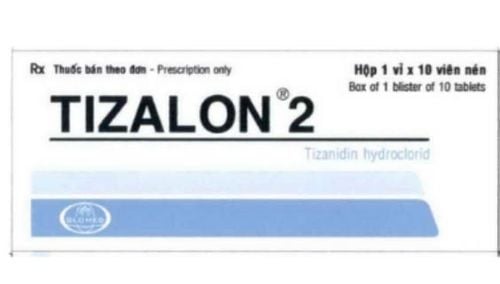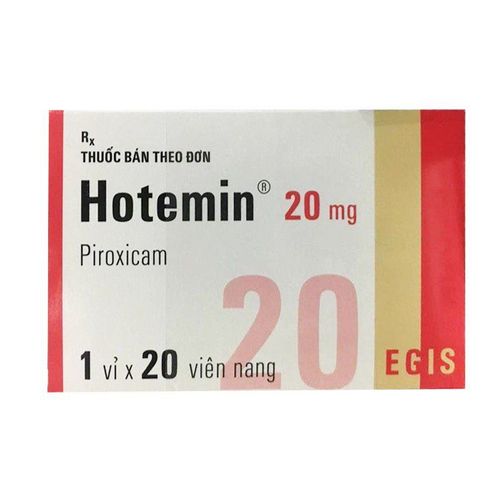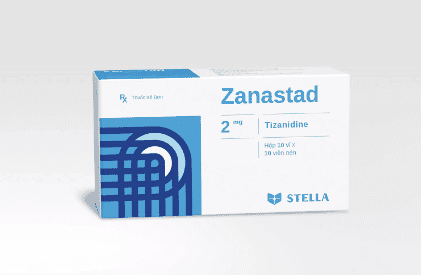This is an automatically translated article.
Article by Master, Doctor Vu Duy Dung - Department of General Internal Medicine - Vinmec Times City International Hospital
Ataxia is a physical symptom on examination and is often associated with cerebellar disease. However, abnormal sensory information going to the cerebellum, such as diseases of the posterior column/somatosensory system, can also cause ataxia. Thus, ataxia can have both motor and sensory components, and not all patients with ataxia have cerebellar disease.
1. Neurological examination in ataxia
The neurological examination in ataxia can be divided into several parts: eyes, speech, hands, feet, and gait.
Several eye movement abnormalities may be associated with different types of ataxia: (1) fixed gaze jerks (ie, square wave jerks), which may be particularly common in Friedreich's ataxia, ( 2) horizontal or vertical terminal nystagmus, which can be seen in many ataxia types, of which nystagmus can be seen in cerebellar ataxia (SCA) type 6 (SCA6), (3 ) rapid or out of focus glance, which can be seen in many types of ataxia, (4) inability to see in a flexible way, common in SCA3, (5) slow gaze, typical for SCA2, (6 ) ophthalmoplegia, which can be seen in sensory ataxia, dysarthria, and ophthalmoplegia (SANDO), and (7) ptosis, which can be seen in SANDO and ataxia associated with genomic mutations mitochondrial.
Of these signs, nystagmus and rapid or out-of-focus glances are common in many ataxia; Therefore, these findings are useful in distinguishing cerebellar ataxia from sensory ataxia, especially in the early stages of the disease when cerebellar atrophy is not present on neuroimaging.
Patients with ataxia often have interrupted speech (that is, words are broken into distinct syllables and normal speech patterns are disrupted). Speech rate may be slow, and word count may vary.
Three commonly used tests for ataxia of the hand include:
(1) Finger-nose-finger test (patient repeats the movements of pointing the index finger to his nose and then to his finger) examiner's) (2) Finger chasing (patient's index finger follows the examiner's moving index finger as accurately as possible) (3) Alternating rapid movements (patient performs cycles repeat prone and supine hands on thighs). At alternate rapid movements. In the heel-to-leg maneuver, patients with ataxia are asked to straighten one leg and use the heel of the other foot to slide smoothly and accurately down the lower leg from the knee, but it is difficult for the patient to Keep the heel resting on the shin.
Next, the patient should be asked to stand in a natural position, so that the physician can observe any swinging or swaying of the torso. The patient is then instructed, if possible, to stand with the front foot in a straight line, standing on each foot, or hopscotch with each foot.
These tests are used to evaluate subtle balance abnormalities associated with cerebellar dysfunction. A useful further examination is to ask the patient to close his or her eyes during these maneuvers; Such a significant decrease in balance on examination points to a role for sensory neuropathy.
The gait examination should focus on observing changes in step length and direction, and an ataxia gait can change characteristics at different stages of the disease. In mild ataxia, the gait may be narrow but oriented to one side, and there is often a missed step. Turning can often reveal gait deficits in patients with ataxia. In moderate ataxia, the gait becomes wide to compensate for loss of balance. In severe ataxia, step length can be shortened in addition to a wide-footed gait to allow for more compensation. For patients who have difficulty walking up or down stairs or running, observing them perform such movements often provides additional diagnostic information.
Once the neurologic examination has confirmed ataxia, other accompanying signs may play a decisive role in guiding the specific diagnosis. Some points of special attention are the signs of Parkinson's disease, tremor, dystonia, myoclonus, sensory neuropathy, hyperreflexia, and extensor reflex. Other findings on physical examination that may aid the diagnosis, include varicose veins (in avascular ataxia), splenomegaly (in Niemann-Pick type C disease), scoliosis, and foot depressions (in the ventricles) Friedreich thing).

Bệnh nhân thất điều có thể mắc cả bệnh Parkinson
2. Testing in ataxia
Serum biomarkers are useful for nutritional and immune-mediated causes of ataxia. Blood levels of vitamin B12 and vitamin E can be tested for vitamin deficiency-related ataxia. Although blood levels of vitamin B1 and associated red blood cell transketolase activity can be measured, it is unclear whether these measurements accurately reflect brain concentrations. Much clinical suspicion and empiric treatment with thiamine in ataxia patients with altered mental status and nystagmus are important in the management of Wernicke encephalopathy.
Serum antibody levels may specifically indicate immune-mediated ataxia (eg, anti-glutamic acid decarboxylase [GAD] antibodies). Serum anti-gliadin and tissue transglutaminase antibodies are associated with gluten-sensitive ataxia. Anti-thyroperoxidase antibodies may indicate ataxia associated with steroid-responsive encephalopathy. Paraneoplastic antibodies should also be tested in patients with subacute cerebellar ataxia. Whether these antibodies are the etiology of ataxia is not entirely clear.
Lumbar puncture should be performed in patients with acute or subacute ataxia. CSF testing including cytology, glucose, and protein levels, immunoglobulins, and testing for viruses and bacteria can help identify inflammatory and infectious causes of ataxia. Cerebrospinal fluid testing may also be used to diagnose Creutzfeldt-Jacob disease. Low levels of glucose in the CSF may indicate ataxia with type 1 glucose transporter deficiency. If acquired causes of ataxia have been ruled out or if the patient has a family history of ataxia, especially Particularly in first-generation relatives, genetic testing should be indicated, and will be detailed below.

Bệnh nhân thất điều cần được xét nghiệm huyết thanh
3. Neuroimaging in ataxia
Patients with ataxia require brain MRI to identify any vascular and structural lesions, including brain tumor, brain abscess, ischemic and hemorrhagic stroke, or multiple sclerosis. Cerebellar atrophy is the most common imaging result. The neurologist should evaluate the extent of cerebellar atrophy in the nystagmus, medial lobes, and hemispheres. The boundaries of the leaves in the cerebellar lobes become more obvious with cerebellar degeneration. The cerebellum important for motor control is concentrated mainly in the anterior lobes, and atrophy of this region is associated with ataxia.
However, atrophy of the posterior lobes of the cerebellum may be associated with nonmotor symptoms of cerebellar dysfunction, such as depression and emotional instability. Lobar atrophy may be associated with gait and trunk ataxia, whereas medial lobar atrophy may be more associated with limb ataxia. Some types of ataxia may not be accompanied by cerebellar atrophy, especially in the early stages. These ataxias are the result of a dominant sensory neuropathy, such as Friedreich's ataxia and ataxia with vitamin E deficiency and POLG ataxia.
In addition to cerebellar atrophy, other images on MRI may be specific for the diagnosis. The hot cross bun sign (a cross on the pons on a T2 MRI pulse) can be seen in multisystem atrophy and certain types of cerebellar ataxia. T2 hyperintensity in the mammary body, midbrain periventricular gray matter, and paraventricular thalamus are changes that may be seen in Wernicke encephalopathy. Cerebral white matter alterations can be seen in tendinosis and adult-onset Alexander disease. Hyperintensity on T2 in the bilateral inferior oval nuclei, indicative of hypertrophic neuronal degeneration, may be seen in POLG ataxia, adult-onset Alexander disease, and gluten-sensitive ataxia. Other specific MRI pulses may be useful for specific types of ataxia. For example, GRE pulses can be used to identify superficial iron contamination, and diffuse pulses can be useful in the diagnosis of Creutzfeldt-Jacob disease. In addition to the cerebellum, special attention should also be given to the spinal cord because spinal atrophy can be seen in patients with Friedreich's ataxia.
4. Other tests in ataxia
Additional tests to identify extra-cerebellar symptoms may guide the diagnosis. If multiple system atrophy is suspected, evaluation for orthostatic hypotension or urinary disturbances and a sleep probe demonstrating rapid eye movement (REM) sleep behavior disorder may be necessary. Dopamine transporter imaging can be used to determine whether or not presynaptic dopamine termination is present. Sensory neuropathy can be assessed with nerve conduction testing. If differential diagnosis with Creutzfeldt-Jacob disease is required, electroencephalogram (EEG) should be recorded to look for typical cyclic spike-wave complexes.

Bệnh nhân thất điều cần thực hiện nhiều xét nghiệm để có chẩn đoán chính xác nhất
5. Diagnosis of ataxia
The previous sections have covered the history, neurological examination, and diagnostic testing of cerebellar ataxia. The following sections describe the step-by-step evaluation of cerebellar ataxia.
In patients with balance disorders, the first step is to determine the presence of cerebellar ataxia. Other causes of balance disorders should be considered, including Parkinson's syndrome, sensory neuropathy, vestibular disorders, muscle weakness, and orthopedic problems. Once ataxia is identified, the next step is to evaluate for acquired causes of ataxia, such as toxic exposure, nutritional deficiencies, and immune-mediated causes (anti-GAD antibodies or ataxia associated with sensitivity) gluten sensitivity), and paraneoplastic causes. Brain MRI should be performed, and varying degrees of cerebellar atrophy are expected. However, certain types of cerebellar ataxia with predominant sensory neuropathy may not have cerebellar atrophy, as noted above. Particular attention should be paid to specific changes on MRI.
For patients with a family history of ataxia, the diagnosis can be divided into autosomal dominant and autosomal recessive, X-linked ataxia, and mitochondrial diseases. possible, depending on the type of inheritance. If there is no family history of ataxia and disease onset occurs when the patient is over 60 years of age, degenerative causes are likely. In this group, multisystem atrophy is associated with Parkinson's syndrome, tachycardic sleep behavior disturbances, and autonomic disturbances, whereas idiopathic late-onset cerebellar ataxia usually presents only alone is cerebellar ataxia.
Neurological examination confirmed ataxia. To register for examination and treatment at Vinmec International General Hospital, you can contact the nationwide Vinmec Health System Hotline, or register online HERE.
Source: Kuo SH. Ataxia. Continuum 2019;25(4, Movement Disorders): 1036–1054.
See more Documentation about Ataxia Master Vu Duy Dung:
Symptoms and causes of ataxia Clinical examination, laboratory tests and diagnosis of ataxia Genetic ataxia and degenerative ataxia ataxia treatment














